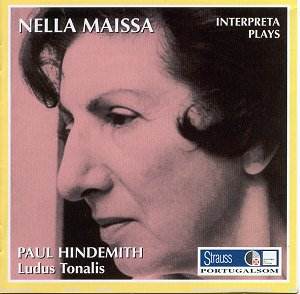
But I haven’t seen a good discussion of this problem in the literature. I would not propose a lack of expressiveness as a failure, because the inexpressive, the grey, the technical, the private, are all part of what Hindemith’s music does. It has a slightly sad “Arioso” -but only slightly sad, because most of Hindemith’s attention is focused on the possibilities of mirroring in the closing piece. The opening piece, which is mirrored and inverted in the closing piece (another technical feat-see below) is the most varied in expression it borrows, for example, from Bach’s Chromatic Fantasy and Fugue. 7, “Scherzando”), but as in Reger, such pieces tend to be leaden: even the playfulness is ponderous. Hindemith was always capable of machine-gun fast marches, which have a sort of heavy wit (the best here is Interludium no. 15, seems crafted to avoid sentiment, even though its form (walking bass, counterpoint of singing alto and soprano voices) is exactly what composers up through Prokofiev used for explicitly expressive purposes. 19, which I reproduce in its entirety here-although at the tempo Hindemith has indicated, the piece also loses some of the poignance it might have at a slightly faster tempo see Sviatoslav Richter’s performance for example.)Īt least one slow piece, Interludium, no. (There are a couple of strong exceptions, such as the plaintive Interludium, no. The humorous pieces here are stilted the marches are, as usual, harsh, cynical, and dissonant, in the manner of early modernism the lento pieces mainly avoid strong affect. Of the principal composers of his generation, Hindemith is perhaps the driest. Apparently Hindemith intended to effect a fusion between eighteenth-century fugue forms and twentieth-century harmonic theory, but if that’s the case then it implies a strange sense of the past: it’s as if a particular academic past is somehow required by mid-twentieth century post-tonal music, or compatible with it.



It can seem hopeless and comical in its reactionary academicism, and in the idea that modernity, in this case, can be adequately addressed by inventing idiosyncratic harmonic theories. As a neoclassical gesture the Ludus tonalis is belated and doctrinaire in comparison to other neoclassicisms, for example Stravinsky’s. It would be interesting to know more about what led to the impetus to respond to Bach, and to demonstrate his own harmonic theory, at this particular moment. Ludus tonalis was composed in America, in 1942, and it may have been a response partly to Stravinsky, and perhaps also to early works by Babbitt and others. I suspect that for Hindemith it meant an opportunity to occlude sentiment in the name of complexity of construction. I’m not interested in technical analyses of fugues, because I am not sure of the purpose of demonstrating permutations of the form in America in the mid-twentieth century. What matters more, I think, is Ludus tonalis’s broader relation to modernity, and what it meant at that time to look back to the WTC. Gabriela Vlahopol’s essay “Baroque Reflections in Ludus Tonalis by Paul Hindemith,” which is available on the internet, summarizes the technical points and proposes some (mainly unconvincing) parallels to specific pieces in the WTC. Most liner notes and newspaper reviews focus on Hindemith’s harmonic theory, which is embodied in the sequences of fugues, and on the piece’s technical accomplishments. There is at least one dissertation, Debra Torok’s “Paul Hindemith’s Ludus Tonalis: Harmonic fluctuation analysis and its performance implications.” Hindemith apparently said he doubted there were many people left who could appreciate this level of composition. Ludus tonalis, which contains “interludes” and fugues in all 24 keys, is one of the twentieth century’s principal responses to Bach’s Well-Tempered Clavier. (Another is Shostakovich’s Twenty-four Preludes and Fugues, which I also review on this site.) An article comparing the Bach and Hindemith pieces was written in 1959 (Hans Tischler, “Hindemith’s Ludus tonalis and Bach’s Well-Tempered Clavier: A Comparison.” Music Review 20: 217-27), and an internet search turns up several master’s theses on the subject (some in Romania, for some reason).


 0 kommentar(er)
0 kommentar(er)
